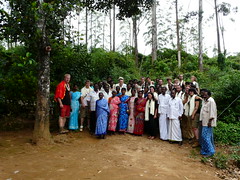This week I went to the Youth Work 4 Health conference held by the National Youth Agency in Brighton. It was an interesting day with a lot of discussion about how you can use the Youth Work 4 Health (YW4H) good practice guidelines within different youth settings. 
I was particularly interested to see how the guidelines could support our move as a local authority towards an Integrated Youth Support and Development Service bringing the different interpretations of health and the ways in which we work with young people concerning health issues together. As all aspects of Connexions start to fall under our management or commissioning of services I felt that the guidelines provide a useful overarching method of developing our work and bring together some very different areas and methods of working using a common framework.
The Guidelines encompass 4 strands – Healthy Lives, Healthy Relationships and Sex, Mental and Emotional Wellbeing and Substance use.
They provide for 3 levels of delivery:-
“Core – The core level outlines the basic knowledge, skills and structures that all services working with young people should have. It may be that health issues come up sometimes in the work of the unit – either because of peripheral links from another activity or as an occasional discrete activity – eg a generic youth club that sometimes runs activities that may lead to discussion about healthier lifestyles, or workers who receive informal one-to-one questions from young people.
Regular – A unit at regular level will meet the core level indicator and will deliberately raise aspects of a health issue as part of its mainstream work with young people – eg an outdoor education activity where diet, nutritional needs and healthy lifestyle overall are a part of the scheduled programme; or a project that runs some sexual health activities as a part of its annual programme.
I think that the guidelines provide us with a really useful tool for not only reviewing our policies and guidelines (for instance on Drugs, Sex and Realtionships Education etc) but also to assess which areas of our provision are providing what aspect of health and at which level for young people. So now I need to discuss it with the other Senior Managers and then look at how we might implement it across the county…..watch this space!!!






Leave a comment